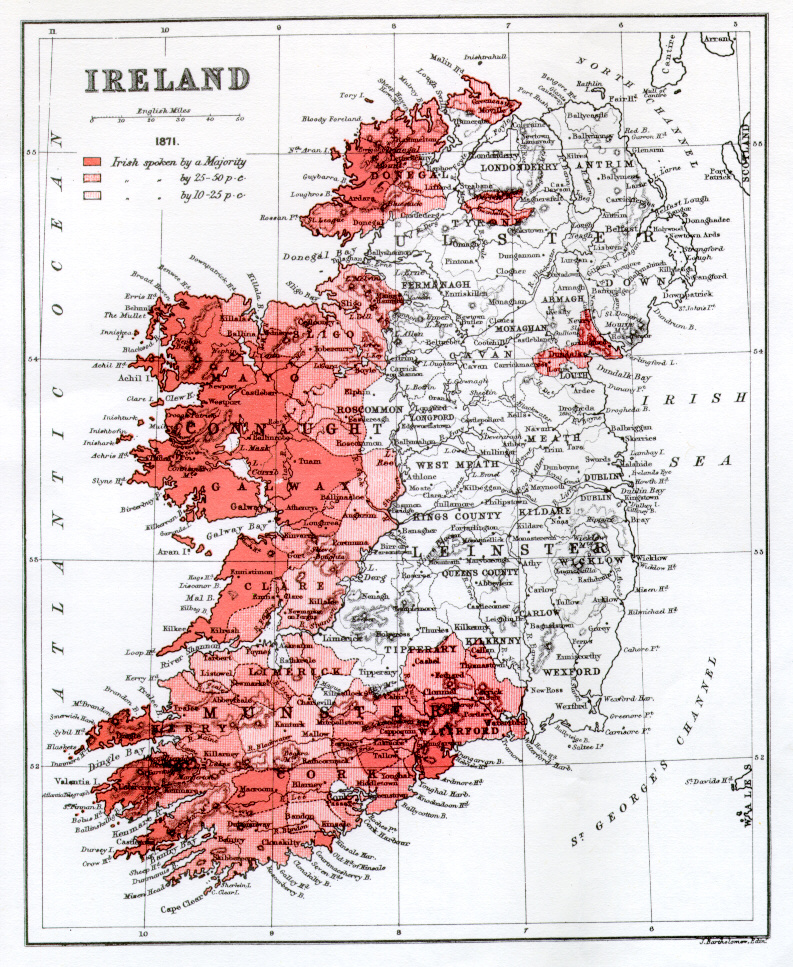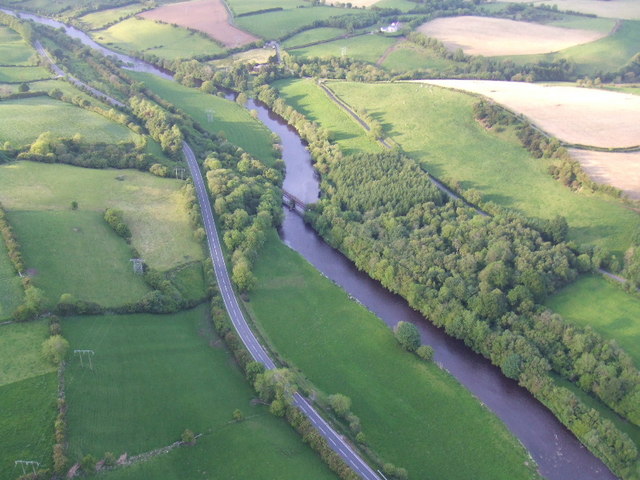|
Ballycolman
Ballycolman (Irish: ''Baile Uí Colmain'' ) is a townland of 588 acres in County Tyrone, Northern Ireland, now part of Strabane. It is situated in the historic barony of Strabane Lower and the civil parish of Urney. The name derives from the Irish: ''Baile Uí Colmain'' (Colman's town). The population of the townland declined during the 19th century: It was then subsumed into Strabane. It is best known for Ballycolman housing estate in Strabane, and also has a community centre, nursery school and industrial estate. See also *List of townlands of County Tyrone This is a sortable table of the approximately 2,162 townlands in County Tyrone, Northern Ireland Northern Ireland ( ga, Tuaisceart Éireann ; sco, label=Ulster-Scots, Norlin Airlann) is a part of the United Kingdom, situated in the north ... References {{coord missing, County Tyrone Townlands of County Tyrone Civil parish of Urney ... [...More Info...] [...Related Items...] OR: [Wikipedia] [Google] [Baidu] |
Urney, County Tyrone
Urney () is a townland (of 188 acres) and civil parish in County Tyrone, Northern Ireland. Both townland and parish are situated in the historic barony of Strabane Lower. It lies within the Derry City and Strabane area. Urney is notable as being the first manufacturing location of Urney Chocolates, established in 1919. It was also the birthplace of William Burke, notorious for the Burke and Hare murders. Civil parish of Urney Townlands The civil parish of Urney contains the following townlands: B Backtown, Ballycolman, Ballyfatten, Ballylennan Scott, Bellspark, Berrysfort, Bridgetown C Carricklee, Carrickone, Castlegore, Castlesessagh, Castletown, Cavan, Churchtown, Clady, Craigmonaghan (Nelson), Creevy Lower, Creevy Upper D Dartans, Donnygowen, Drumeagle F Flushtown, Fort-town, Freughlough G Gallany, Ganvaghan Kyle, Glebe, Glebe (Old), Glentimon, Glentown, Gortlogher H Hunterstown I Ichenay, Ichenny Upper, Inisclan K Kennystown, Kilclean, Ki ... [...More Info...] [...Related Items...] OR: [Wikipedia] [Google] [Baidu] |
Strabane
Strabane ( ; ) is a town in County Tyrone, Northern Ireland. Strabane had a population of 13,172 at the 2011 Census. It lies on the east bank of the River Foyle. It is roughly midway from Omagh, Derry and Letterkenny. The River Foyle marks the border between Northern Ireland and the Republic of Ireland. On the other side of the river (across Lifford Bridge) is the smaller town of Lifford, which is the county town of Donegal. The River Mourne flows through the centre of the town and meets the Finn to form the Foyle River. A large hill named Knockavoe, which marks the beginning of the Sperrin Mountains, forms the backdrop to the town. History Early history The locale was home to a group of northern Celts known as the Orighella as far back as the fourth century when the territories of Owen (later Tír Eoghain) and Connail (later Tír Chonaill - mostly modern County Donegal) were established, and Orighella were assimilated into the Cenél Conaill. With the arri ... [...More Info...] [...Related Items...] OR: [Wikipedia] [Google] [Baidu] |
List Of Townlands Of County Tyrone
This is a sortable table of the approximately 2,162 townlands in County Tyrone, Northern Ireland Northern Ireland ( ga, Tuaisceart Éireann ; sco, label=Ulster-Scots, Norlin Airlann) is a part of the United Kingdom, situated in the north-east of the island of Ireland, that is variously described as a country, province or region. North .... Retrieved: 18 September 2010 Duplicate names occur where there is more than one townland with the same name in the county. Names marked in bold typeface are towns and villages, and the word ''Town'' appears for those entries in the Acres column. __NOTOC__ A B C D E F G H I K [...More Info...] [...Related Items...] OR: [Wikipedia] [Google] [Baidu] |
Irish Language
Irish (an Caighdeán Oifigiúil, Standard Irish: ), also known as Gaelic, is a Goidelic languages, Goidelic language of the Insular Celtic branch of the Celtic language family, which is a part of the Indo-European languages, Indo-European language family. Irish is indigenous language, indigenous to the Ireland, island of Ireland and was the population's first language until the 19th century, when English (language), English gradually became Linguistic imperialism, dominant, particularly in the last decades of the century. Irish is still spoken as a first language in a small number of areas of certain counties such as County Cork, Cork, County Donegal, Donegal, County Galway, Galway, and County Kerry, Kerry, as well as smaller areas of counties County Mayo, Mayo, County Meath, Meath, and County Waterford, Waterford. It is also spoken by a larger group of habitual but non-traditional speakers, mostly in urban areas where the majority are second language, second-language speakers. ... [...More Info...] [...Related Items...] OR: [Wikipedia] [Google] [Baidu] |
Townland
A townland ( ga, baile fearainn; Ulster-Scots: ''toonlann'') is a small geographical division of land, historically and currently used in Ireland and in the Western Isles in Scotland, typically covering . The townland system is of Gaelic origin, pre-dating the Norman invasion, and most have names of Irish origin. However, some townland names and boundaries come from Norman manors, plantation divisions, or later creations of the Ordnance Survey.Connolly, S. J., ''The Oxford Companion to Irish History, page 577. Oxford University Press, 2002. ''Maxwell, Ian, ''How to Trace Your Irish Ancestors'', page 16. howtobooks, 2009. The total number of inhabited townlands in Ireland was 60,679 in 1911. The total number recognised by the Irish Place Names database as of 2014 was 61,098, including uninhabited townlands, mainly small islands. Background In Ireland a townland is generally the smallest administrative division of land, though a few large townlands are further divided into ... [...More Info...] [...Related Items...] OR: [Wikipedia] [Google] [Baidu] |
County Tyrone
County Tyrone (; ) is one of the six counties of Northern Ireland, one of the nine counties of Ulster and one of the thirty-two traditional counties of Ireland. It is no longer used as an administrative division for local government but retains a strong identity in popular culture. Adjoined to the south-west shore of Lough Neagh, the county covers an area of and has a population of about 177,986; its county town is Omagh. The county derives its name and general geographic location from Tír Eoghain, a Gaelic kingdom under the O'Neill dynasty which existed until the 17th century. Name The name ''Tyrone'' is derived , the name given to the conquests made by the Cenél nEógain from the provinces of Airgíalla and Ulaid.Art Cosgrove (2008); "A New History of Ireland, Volume II: Medieval Ireland 1169-1534". Oxford University Press. Historically, it was anglicised as ''Tirowen'' or ''Tyrowen'', which are closer to the Irish pronunciation. History Historically Tyrone (then ... [...More Info...] [...Related Items...] OR: [Wikipedia] [Google] [Baidu] |
Northern Ireland
Northern Ireland ( ga, Tuaisceart Éireann ; sco, label=Ulster-Scots, Norlin Airlann) is a part of the United Kingdom, situated in the north-east of the island of Ireland, that is variously described as a country, province or region. Northern Ireland shares an open border to the south and west with the Republic of Ireland. In 2021, its population was 1,903,100, making up about 27% of Ireland's population and about 3% of the UK's population. The Northern Ireland Assembly (colloquially referred to as Stormont after its location), established by the Northern Ireland Act 1998, holds responsibility for a range of devolved policy matters, while other areas are reserved for the UK Government. Northern Ireland cooperates with the Republic of Ireland in several areas. Northern Ireland was created in May 1921, when Ireland was partitioned by the Government of Ireland Act 1920, creating a devolved government for the six northeastern counties. As was intended, Northern Irela ... [...More Info...] [...Related Items...] OR: [Wikipedia] [Google] [Baidu] |
Barony (geographic)
A barony is an administrative division of a county in Scotland, Ireland, outlying parts of England and historically France. It has a lower rank and importance than a county. Origin A geographic barony is a remnant from mediaeval times of the area of land held under the form of feudal land tenure termed feudal barony, or barony by tenure, either an English feudal barony, a Scottish feudal barony or an Irish feudal barony, which all operated under different legal and social systems. Just as modern counties are no longer under the administrative control of a noble count or earl, geographic baronies are generally no longer connected with feudal barons, certainly not in England where such tenure was abolished with the whole feudal system by the Tenures Abolition Act 1660. The position in Scotland is more complex, although the legal force of the Scottish feudal baron was abolished early in the 21st century.P. G. B. McNeill and H. L. MacQueen, eds, ''Atlas of Scottish History to 17 ... [...More Info...] [...Related Items...] OR: [Wikipedia] [Google] [Baidu] |
Strabane Lower
Strabane Lower (named after Strabane) is a barony in County Tyrone, Northern Ireland. It is bordered by five other baronies in Northern Ireland: North West Liberties of Derry to the north; Tirkeeran to the north-east; Strabane Upper to the east; Omagh East to the south; and Omagh West to the south-west. It also borders two baronies in County Donegal in the Republic of Ireland: Raphoe North and Raphoe South to the west. List of settlements Below is a list of settlements in Strabane Lower: Towns * Strabane Villages *Ardstraw * Artigarvan *Ballymagorry * Clady *Donemana * Newtownstewart *Sion Mills List of civil parishes Below is a list of civil parishes in Strabane Lower: * Ardstraw (split with barony of Omagh West) * Camus * Cumber Upper Cumber Upper is a civil parish in County Londonderry, Northern Ireland. It is mainly situated in the historic barony of Tirkeeran, with one townland ( Stranagalwilly) in the barony of Strabane Lower. Towns and villages The civil pari ... [...More Info...] [...Related Items...] OR: [Wikipedia] [Google] [Baidu] |
Civil Parishes In Ireland
Civil parishes () are units of territory in the island of Ireland that have their origins in old Gaelic territorial divisions. They were adopted by the Anglo-Norman Lordship of Ireland and then by the Elizabethan Kingdom of Ireland, and were formalised as land divisions at the time of the Plantations of Ireland. They no longer correspond to the boundaries of Roman Catholic or Church of Ireland parishes, which are generally larger. Their use as administrative units was gradually replaced by Poor Law Divisions in the 19th century, although they were not formally abolished. Today they are still sometimes used for legal purposes, such as to locate property in deeds of property registered between 1833 and 1946. Origins The Irish parish was based on the Gaelic territorial unit called a '' túath'' or '' Trícha cét''. Following the Norman invasion of Ireland, the Anglo-Norman barons retained the ''tuath'', later renamed a parish or manor, as a unit of taxation. The civil parish ... [...More Info...] [...Related Items...] OR: [Wikipedia] [Google] [Baidu] |
Townlands Of County Tyrone
A townland ( ga, baile fearainn; Ulster-Scots: ''toonlann'') is a small geographical division of land, historically and currently used in Ireland and in the Western Isles in Scotland, typically covering . The townland system is of Gaelic origin, pre-dating the Norman invasion, and most have names of Irish origin. However, some townland names and boundaries come from Norman manors, plantation divisions, or later creations of the Ordnance Survey.Connolly, S. J., ''The Oxford Companion to Irish History, page 577. Oxford University Press, 2002. ''Maxwell, Ian, ''How to Trace Your Irish Ancestors'', page 16. howtobooks, 2009. The total number of inhabited townlands in Ireland was 60,679 in 1911. The total number recognised by the Irish Place Names database as of 2014 was 61,098, including uninhabited townlands, mainly small islands. Background In Ireland a townland is generally the smallest administrative division of land, though a few large townlands are further divided into ... [...More Info...] [...Related Items...] OR: [Wikipedia] [Google] [Baidu] |






